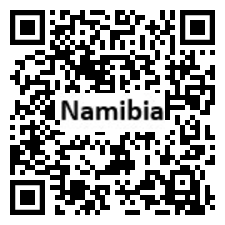Country Summary




Introduction
Background
South Africa occupied the colony, then known as German South West Africa, in 1915 during World War I and administered it as a mandate until after World War II. In 1966, the Marxist South-West Africa People's Organization (SWAPO) guerrilla group launched a war of independence for the area that became Namibia. Namibia gained independence in 1990 and has been governed by SWAPO since, though the party has dropped much of its Marxist ideology.
Geography
Area
total: 824,292 sq km
land: 823,290 sq km
water: 1,002 sq km
Climate
desert; hot, dry; rainfall sparse and erratic
Natural resources
diamonds, copper, uranium, gold, silver, lead, tin, lithium, cadmium, tungsten, zinc, salt, hydropower, fish, note, suspected deposits of oil, coal, and iron ore
People and Society
Population
2,727,409 (2022 est.)
Ethnic groups
Ovambo 50%, Kavangos 9%, Herero 7%, Damara 7%, mixed European and African ancestry 6.5%, European 6%, Nama 5%, Caprivian 4%, San 3%, Baster 2%, Tswana .5%
Languages
Oshiwambo languages 49.7%, Nama/Damara 11%, Kavango languages 10.4%, Afrikaans 9.4% (also a common language), Herero languages 9.2%, Zambezi languages 4.9%, English (official) 2.3%, other African languages 1.5%, other European languages 0.7%, other 1% (2016 est.)
Religions
Christian 97.5%, other 0.6% (includes Muslim, Baha'i, Jewish, Buddhist), unaffiliated 1.9% (2020 est.)
Population growth rate
1.82% (2022 est.)
Government
Government type
presidential republic
Capital
name: Windhoek
Executive branch
chief of state: President Hage GEINGOB (since 21 March 2015); Vice President Nangola MBUMBA (since 8 February 2018); note - the president is both chief of state and head of government
head of government: President Hage GEINGOB (since 21 March 2015); Vice President Nangola MBUMBA (since 8 February 2018); Prime Minister Saara KUUGONGELWA-AMADHILA (since 21 March 2015)
Legislative branch
description: bicameral Parliament consists of:
National Council (42 seats); members indirectly elected 3 each by the 14 regional councils to serve 5-year terms); note - the Council primarily reviews legislation passed and referred by the National Assembly
National Assembly (104 seats; 96 members directly elected in multi-seat constituencies by closed list, proportional representation vote to serve 5-year terms and 8 nonvoting members appointed by the president)
Economy
Economic overview
upper middle-income Sub-Saharan economy; environmentally fragile but natural resource rich; struggling to recover from 2016 recession; pegged exchange rate to South African rand; ongoing post-apartheid land reforms; still high socioeconomic inequality
Real GDP (purchasing power parity)
$22.6 billion (2020 est.)
Real GDP per capita
$8,900 (2020 est.)
Agricultural products
roots/tubers nes, milk, maize, onions, beef, grapes, fruit, pulses nes, vegetables, millet
Industries
meatpacking, fish processing, dairy products, pasta, beverages; mining (diamonds, lead, zinc, tin, silver, tungsten, uranium, copper)
Exports
$3.56 billion (2020 est.)
Exports - partners
China 27%, South Africa 18%, Botswana 8%, Belgium 7% (2019)
Exports - commodities
copper, diamonds, uranium, thorium, gold, radioactive chemicals, fish (2019)
Imports
$4.54 billion (2020 est.)
Imports - partners
South Africa 47%, Zambia 16% (2019)
Imports - commodities
copper, refined petroleum, delivery trucks, diamonds, cars (2019)
Exchange rates
Namibian dollars (NAD) per US dollar -
Page last updated: Tuesday, July 26, 2022
